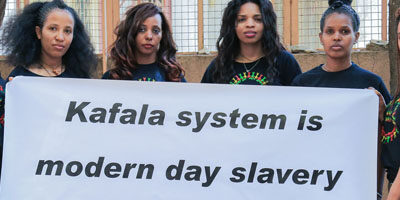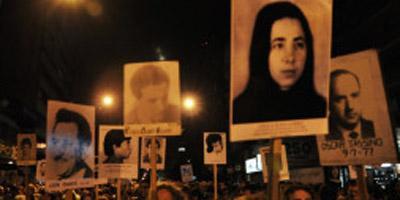
Photo: Women going to a community meeting in Bagram, Afghanistan. Courtesy ISAF Public Affairs
Once a woman in Afghanistan has been charged with a crime, she will most likely not see the inside of a courtroom nor attain justice otherwise, but will be thrown in jail, usually for crimes that aren’t directly codified in Afghan law.
After imprisonment, she has little hope of re-integrating into her society and her options are few. Dishonored and ostracized from family and the community, some women seek asylum in an NGO-run shelter. Others die, either as an ‘honour killing’ by her family or by suicide. Some, in extreme desperation, douse themselves in gasoline and set themselves on fire.
There are 600 women in Afghan jails today – two percent of the prison population – according to the UN Office for Drugs and Crime (UNODC). Half of them were found to have committed a ‘moral crime,’ a conservative interpretation of Sharia law in the Afghan Constitution. For many, their imprisonment stems from personal vendettas and their inability to seek legal aid. Eighty percent of rural women do not have basic literacy skills and are unaware of their constitutional rights. Women are even charged because of actions in which they are the victims.
Reintegration into society depends on the type of crime a woman commits. One traded into marriage as restitution for another person’s crimes or a feud has a better chance of acceptance than one who escaped a forced marriage and/or violence, eloped or was accused of adultery.
For some women, however, prison can serve as an escape from domestic violence. More than 90% of women in the southeast regions of the country are in arranged marriages, according to the NGO Global Rights. In rural areas, four out of five women experience physical and psychological violence. Women seek divorce mainly due to domestic abuse or forced marriages. Impoverished rural women are most likely to try to flee abuse. These women face tougher circumstances after release than urban women.
“A system in which women feel safer in prison than in their own home is indicative of the unequivocal failure of the state to protect women from harm,” a Global Rights report concluded in 2008, blaming pervasive corruption.
“Moral Crimes”
Women are most commonly charged with ‘moral crimes’ under Article 130 of the constitution, which states that in cases not covered by a specific law Hanafi jurisprudence can apply. This is a body of Sharia law that is often interpreted conservatively.
Moral crimes include having sex out of wedlock, running away from home, escaping from a forced marriage, eloping and rape, which is often considered adultery.
Decades of war has left the judicial system inadequate. Society relies on religious traditions for regulation, and individual interpretations of Sharia law are legally enabled through Afghan constitution.
“The law is translated by people with very limited experience and education,” director of the Vancouver chapter of Canadian Women for Afghan Women, Lauryn Oates, said. “It is dependent on their personal opinion.”
According to Medica Mondiale, a German NGO, “The judiciary is not seen as an institution dedicated to the equal application of justice, nor one that upholds the rights of all citizens.”
Afghanistan committed to principles of gender equality and agreed to abolish discriminatory laws when it signed the Convention on the Elimination of All Forms of Discrimination Against Women in 2003. Equality of men and women was included in the 2004 constitution. In reality, however, these commitments are rarely honoured.
Divorce and Community Court
Family honour is an integral part of Afghan identity. Women who pursue divorce are stigmatized and have lower social statuses. They rarely turn to authorities, for fear of being returned to their families or being wrongfully accused.
In a jirga or shura, a form of community court, a mullah with a conservative interpretation of Sharia law can even condone violence through Article 53 of the constitution, which allows a criminal act with good purpose.
The situation for women in Afghanistan is such that their suicide rate is higher than it is for men. “Divorced women are dishonored women,” Makai Aref, director of The Afghan Women’s Center in Montreal, said.
Finding Shelter in Prison
Jails like Pul-e-Charki are notorious for their terrible conditions and high incidences of rape and violence. In response, the UNODC, with financial support from the Italian government, created an improved women’s prison, Badam Bagh, that attempts to protect women from abuse and offers training and vocational skills.
“Jail can be a better option,” Lauryn Oates said. “They are very different from how we know them. The women often live communally, NGOs run literacy and tailoring courses, and there are playgrounds for children, libraries and general services they would otherwise not have access to. Some women can’t believe their luck that they live in these prisons because they have a better standard of living than the average Afghan.”
Islamic custom forbids women from living independently, yet communal prison life acclimatizes women to living together. This prepares them for transitional housing and potentially independent living. Clementine Malpas, who directed a film documentary on Kabul prisons, told me that although it still means imprisonment, this is a sanctuary for many.
After Prison
Going to prison means a loss of credibility in the family for any woman, and they may not be supported once released. Socially ostracized after leaving prison, many live in destitution, often resorting to prostitution. Some want to return to their families and husbands for protection and accompaniment, even though the risk of honour killing is high, but are rejected because of their criminal record or conviction for moral crimes. If a woman is accepted back, she becomes a burden on the family, which may relocate to avoid further indignation.
Seeking Shelter
One option now for some women post-release from prison is safe houses or shelters provided by NGOs with the help of local communities. Organizations such as Medica Mondiale, Women for Afghan Women, Voice of Women, and Humanitarian Assistance for Women and Children in Afghanistan have created more than a dozen shelters across Afghanistan.
Women’s shelters provide safety as well as legal aid, vocational training and trauma counseling. The number of shelters has increased due to collaborative efforts of women’s NGOs and local Afghan groups. Even so, they’re overrun and cannot house the growing demand for sanctuary. Because of limited supplies, professionals, security and space, some NGOs like Humanitarian Assistance for Women and Children of Afghanistan restrict their services. Women with criminal records are the first to be cut because they’re considered potentially dangerous.
Although shelters are necessary, they are a temporary solution. The women must eventually leave, and NGOs find it hard to monitor the safety of released women. A visit from social workers is a reminder of the women’s imprisonment, and may bring further shame to the family and violence upon the woman.
Long Term Solutions
In 2011 the UNODC partnered with NGOs and government ministries to create transitional houses for women leaving prison. They provide shelter, security, counseling and training but, unlike shelters, these aim for longer-term specialized solutions.
Women are trained to build entrepreneurial and financing skills. They work closely with financial staff and employment managers to establish relations with potential employers. Each woman receives an individualized client plan that establishes her needs, tracks her progress and organizes her money.
Residents are expected to work and contribute to household maintenance. “This voluntary work is a symbolic contribution of rent,” UNODC spokesperson Jelena Bjelica said. “But no woman will be required to leave for failure to pay.”
Re-unifying families is vital for women, Esther Hyneman, board member of Women for Afghan Women (WAW) told me. “WAW makes every effort to reintegrate women with their families because life in Afghanistan for a woman is completely centered on family. It’s crucial for her.” The UNODC and WAW opened two transitional houses and operates Family Guidance Centers that protect the rights of women and children in main urban areas. Since 2007 these centers have helped more than eighteen hundred families in crises.
Threats to Reintegration and Empowerment
The Karzai government recently attempted to take control of shelters under the auspices of the Ministry of Women’s Affairs, claiming they were brothels and involved in drug rings.
The government has drafted regulations that would limit access to shelters. Women would be subjected to an application process, including virginity testing and medical examinations. Women’s NGOs say that this process violates women’s privacy and will deter them from seeking help. Those allowed would be unable to leave grounds without permission.
The UNODC recognizes the government’s right to monitor its projects, and hopes that it will provide financial support for the houses. But women’s NGOs told me they fear that if shelters are government run, corruption will deter international donors. “Out of a dozen shelters, there may be one that is unaccountable with its financial business, but most are very accountable and work off shoestring budgets.” Oates says.
The main issue NGOs have with government control is a regulation requiring shelters to return women to whomever comes to take her. This is an outrage according to Esther Hyneman. “We have seen too many cases where other organizations have given women back and the woman ends up being murdered by her family. We will not send a woman to her death.”
Hyneman says that it is essential that Canada continue its state building and development role in Afghanistan. Without these services and international pressure, dangerous policies will continue to destabilize the region. “When there is instability and people do not feel safe or hopeful for their future, disillusionment and frustration are acted out on the backs of women.”
Signs of progress
Women’s organizations are optimistic about advances in gender equality, and shelters are seen as tangible evidence of improvement. “In a country which had no shelters for women ten years ago to having fourteen now is amazing progress,” Hyneman said.
Education, vocational skills and access to housing are important elements of reintegration, according to Oates, empowering women by giving them options. “Women must have a choice, and be able to say no. This can lead to increased social acceptance of women living independently, a structural change that Afghanistan desperately needs.”






